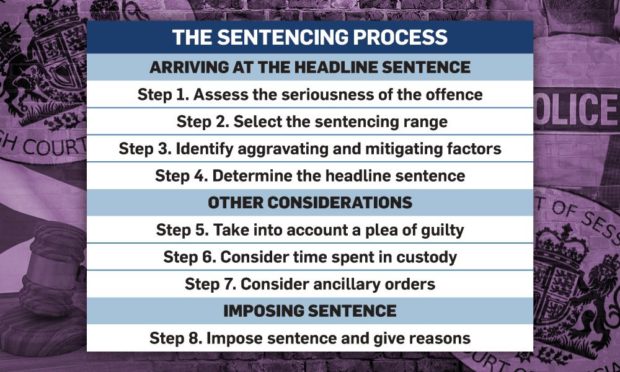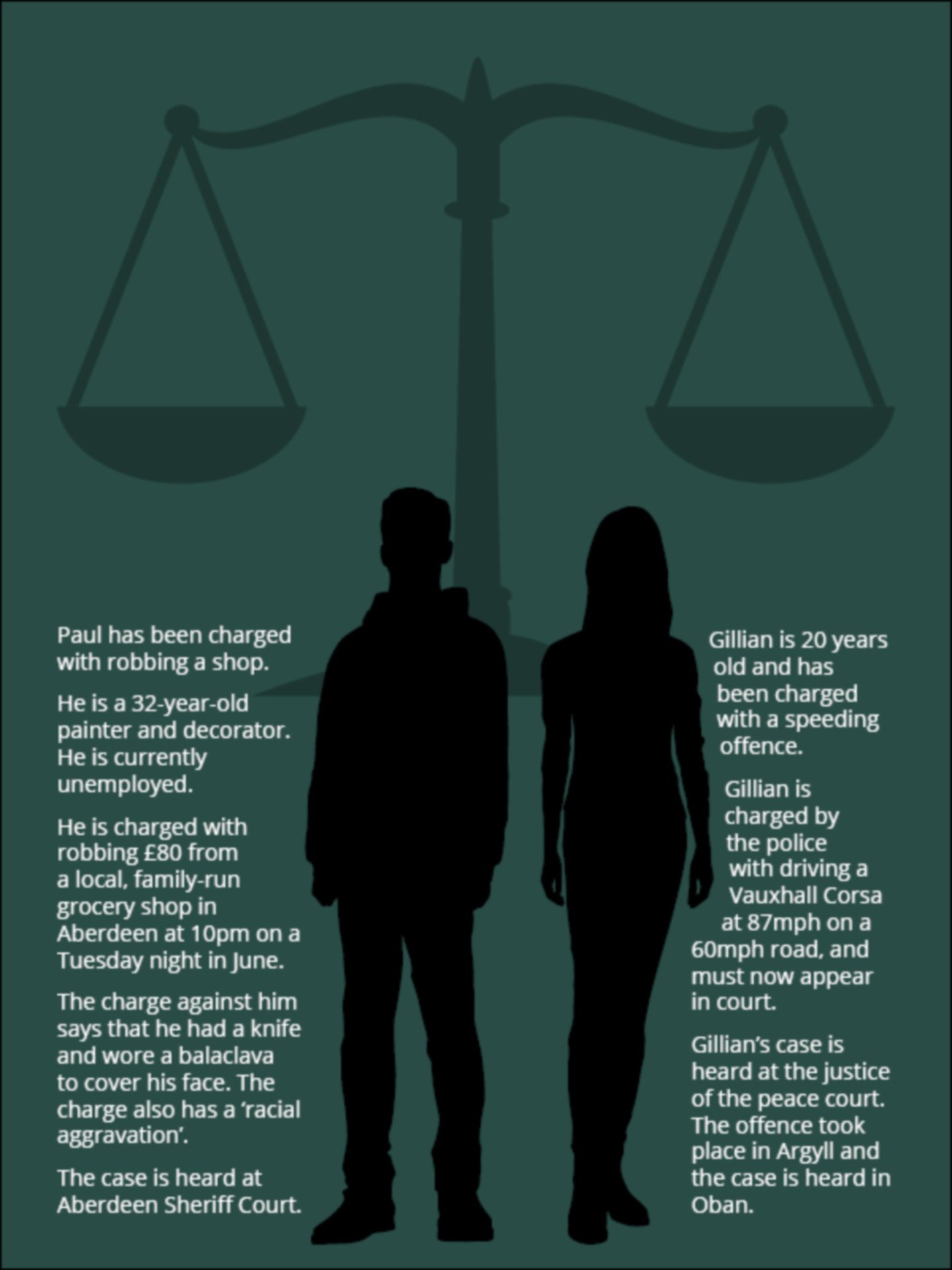How do judges arrive at their sentencing decisions and are they in touch with public opinion?
One of the most common comments “below the line” on our court stories is: “Why didn’t the sheriff/ judge not just lock them up?”
It’s closely followed by: “Why was X offence treated more seriously than Y offence?”
Outlining the complexities of sentencing in each instance would double the length of our court reports and be, frankly, boring.
However, the judiciary – through the Scottish Sentencing Council – has released an eight-step guide to increase public understanding of its judges’ thought process.

And it is clear arriving at a suitable sentence is not as easy as “lock them up and throw away the key”.
From September, when the new guidelines come into force, here’s how they’ll do it.
Let’s get started…
The first element is to determine what the headline sentence will be for the crime.
Step 1: Assess the seriousness of the offence. This is a two-fact test of culpability of the offender – recklessness, intent, maturity can all be considered – and the harm caused by the crime.
Step 2: Select the sentence range – depending on the seriousness of the offence (step one), the judge has a range of sentencing options. There are presumptions against jailing people in certain circumstances.
Step 3: Identify aggravating and mitigating factors (which may increase or reduce the sentence). Aggravations can include factors such as race, religion, terrorism, disability and if the offender is on bail. Mitigations include mental capacity, the effect on dependents, previous good character and remorse.
Step 4: Determine the headline sentence, before any reduction for a guilty plea, or time already spent in custody. This should take into consideration protection of the public, punishment, rehabilitation of offenders and expressing disapproval of offending behaviour.
But we’re not finished yet…
Step 5: Courts are required by law to take into account a guilty plea – this will reduce the headline sentence by a certain amount.
Step 6: Courts must consider time spent in custody on remand, awaiting trial or sentencing and adjust the headline sentence accordingly.
Step 7: Ancillary orders may also be imposed such as a non-harassment order in domestic abuse cases, forfeitures and confiscation orders, football banning orders, deportation or Sexual Offences Prevention Orders.
And finally…
Step 8: Impose sentence and give reasons – the court should always be satisfied the final sentence is fair and proportionate and should set out its reasoning, especially where it diverts for guidelines.

Of course, the options will always be there to try to appeal a sentence so the sentencing process is not necessarily finished.
What would YOU decide?
The Scottish Sentencing Council has also produced a couple of “You are the Judge” scenarios.
You can play the judge by clicking the picture below…












